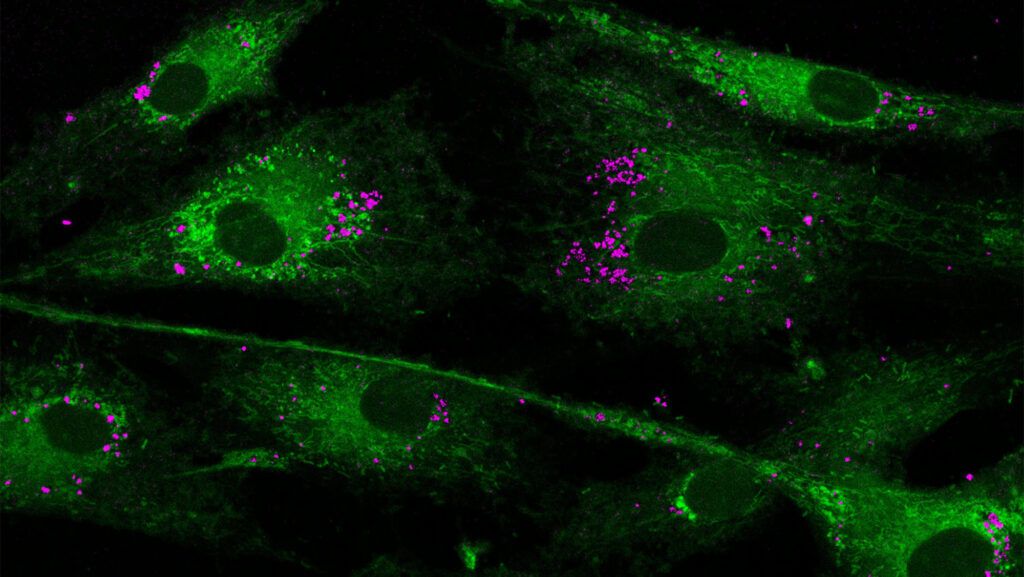Can we ‘recharge’ our cells?
Texas A&M researchers use nanotechnology to recharge the "powerhouse of the cell" in fight against disease and aging.
When we need to recharge, we might take a vacation or relax at the spa. But what if we could recharge at the cellular level, fighting against aging and disease with the microscopic building blocks that make up the human body?
The ability to recharge cells diminishes as humans age or face diseases. Mitochondria, often called the powerhouse of the cell, are central to energy production. When mitochondrial function declines, it leads to fatigue, tissue degeneration and accelerated aging. Activities once requiring minimal recovery now take far longer, highlighting the role these organelles play in maintaining vitality and overall health.
While current treatments for ailments related to aging and diseases like Type 2 diabetes, Alzheimer’s and Parkinson’s focus on managing symptoms, Texas A&M University researchers have taken a new approach to fight the battle at the source: recharging mitochondrial power through nanotechnology.

Nanoflowers
Led by Kanwar Abhay Singh, Ph.D., a biomedical engineering postdoctoral associate in the Gaharwar Laboratory in the Texas A&M College of Engineering Department of Biomedical Engineering, the team has developed molybdenum disulfide, MoS₂, nanoflowers. Named because of their flower-like structure, these nanoparticles contain atomic vacancies that can stimulate mitochondrial regeneration, helping cells generate more energy.
The team recently published their findings in Nature Communications.
“These findings offer a future where recharging our cells becomes possible, extending healthy lifespans and improving outcomes for patients with age-related diseases,” said Akhilesh Gaharwar, Ph.D., Tim and Amy Leach Professor and Presidential Impact Fellow in the Department of Biomedical Engineering.
The nanoflowers could offer new treatments for diseases like muscle dystrophy, diabetes and neurodegenerative disorders by increasing adenosine triphosphate production, mitochondrial DNA and cellular respiration, Gaharwar said. They discovered the atomic vacancies in the nanoflowers stimulate the molecular pathways involved in mitochondrial replication.
Research collaborators include Texas A&M faculty and students. From the Texas A&M College of Agriculture and Life Sciences Department of Biochemistry and Biophysics, Vishal Gohil, Ph.D., Chancellor’s Enhancing Development and Generating Excellence in Scholarship Fellow and professor, provided insights into the mechanisms that could drive the improvement of mitochondrial function.
“This discovery is unique,” Gohil said. “We are not just improving mitochondrial function; we are rethinking cellular energy entirely. The potential for regenerative medicine is incredibly exciting.”
Other Department of Biomedical Engineering contributors include Hatice Ceylan Koydemir, Ph.D., assistant professor, and Irtisha Singh, Ph.D., an affiliate assistant professor in the Department of Molecular and Cellular Medicine. Singh contributed computational analysis that revealed key pathways and molecular interactions responsible for the energy boost.
A profound discovery
“By leveraging advanced computational tools, we can decode the hidden patterns in cellular responses to these nanomaterials, unlocking new possibilities for precision medicine,” Singh said. “It’s like giving cells the right instructions at the molecular level to help them restore their own powerhouses — mitochondria.”
The next steps for the research team include identifying a method for delivering the nanoflowers to human tissue, with the goal of eventual clinical application.
“In science, it’s often the smallest details that lead to the most profound discoveries,” Gaharwar said. “By focusing on the unseen — like atomic vacancies in nanomaterials — we are uncovering new ways to solve big problems. Sometimes, the real breakthroughs come from digging deeper and looking beyond the obvious.”
This story, written by Bailey Noah, first appeared on Texas A&M Engineering.





